Day 1
I feel I should have been born with the middle name Procrastination. Once I get going I am usually OK, but the action of turning up feels neither natural nor pleasurable, which is confusing and saddening, because I have a small, but lovely studio overlooking my patio garden, with the luxury of a second, equally pleasing storage come working studio in the attic.
I don’t experience the same reluctance when I sit down to write, currently my first work, which I am 75,000 words into, or my blog, nor when I make my monthly trek to Anna’s ceramic studio, a two hour bone shaking bus ride, since I sold my car.
I have thought long and hard about why procrastination is my action of choice when it comes to painting and can only deduce that it is because, after over 30 years of reasonably prolific output, I still find it really difficult.
My procrastination frequently includes YouTube, under the guise of learning. It was during such a time waste that I came across a number of videos all extolling the virtue of daily painting, particularly after publically commiting to the challenge.
These official challenges typically last for 30, 100 or 365 days. 365 days seemed quite a commitment, particularly as my life is going through a transition period following lockdown, 30 days too few. I wanted the process to be personal, so I reflected on what had worked for me in the past and the achievement that resonated the most was the Couch to 5K running app, which I completed in the first few weeks of lockdown, aware that the solitary confinement would take its toll on my mental wellbeing. I run every other day in all weathers because I am well acquainted with the black clouds that bubble up on the horizon, when I don’t. The app was a nine week programme, 63 days, so that is what I committed to on Instagram, with the intention of it becoming a lifestyle choice if the benefits prove themself worthy of such a decision.
So, here I am day 1. What have I learned? Principally that my style of working, particularly in watercolour does not really lend itself to daily painting. Here we go, I hear you say! I totally get that, but here comes the excuse anyway. Other people talked about an hour to produce a painting. I wish! This is what I had accomplished after an hour.



Watercolour and paste require drying time, so unless I start work on my paintings first thing and return later in the day, not my normal way of working, but I am here to learn, I need to prepare for the following day, whilst the drying takes place.
The other nagging thought I had was that I really should be working from life with these smaller works. I would normally work from a photo, for two reasons. It may take me weeks or months to complete a painting, during which time the flora usually is a distant memory. The source material is but a passing phase once the painting gathers momentum and gains a life of its own.
My final thought is how does anyone produce a painting in an hour!
Day 2
i must have been standing awkwardly to work yesterday because by late evening my lower back was displaying the familiar sign of a pending problem. I awoke this morning barely able to walk.
I managed to shuffle through my day, applying a second layer to the watercolours, which was barely perceptible to the naked eye.
My amazing friend dropped by to give me a Feldenkrais treatment, which has worked spectacularly well in the past. A new day tomorrow.
Day 3

As the layers start to build and that feeling of memories, history, begins to emerge, I am feeling like the old me. That stark initial watercolour makes me feel exposed, like someone who doesn’t know what they are doing.

Again the image is starting to develop character and i am much more comfortable with that.
Day 4


Day 6
Today I wanted to attempt some looser, non layered paintings. I have been playing with colour combinations. this is W&N Opera and Cerulean and Daniel Smith Hansa Yellow. The painting is of a Cyclamen. i will revisit tomorrow.



These are two other works that I managed to finish this week, spurred on by daily painting.


Why lilies? My work is very personal, I paint my emotions, my experiences, what matters to me. I use floral motifs as a way of accessing particular emotions. Recently I have used snowdrops in my Tread Softly series to represent hope, roses in my Say It With Flowers series to represent love. I return again and again to lilies to signify death, personal or more general, or an ending, the end of a relationship, an experience, a chapter of life.
Painting intuitively allows me to express my feelings in a creative way. This was another work that i finally resolved this week thanks to daily painting.

I didn’t set out to paint this image, but she appeared first, followed by her suitor. Someone on LinkedIn kindly commented that it is ’Hauntingly beautiful’. That is probably the most emotional comment I have ever received, and exactly the sort of reaction I am trying to achieve with all my work.
Day 7


These images feel like when I was painting in the 80s. Too literal. Need to find a way of making more expressive marks
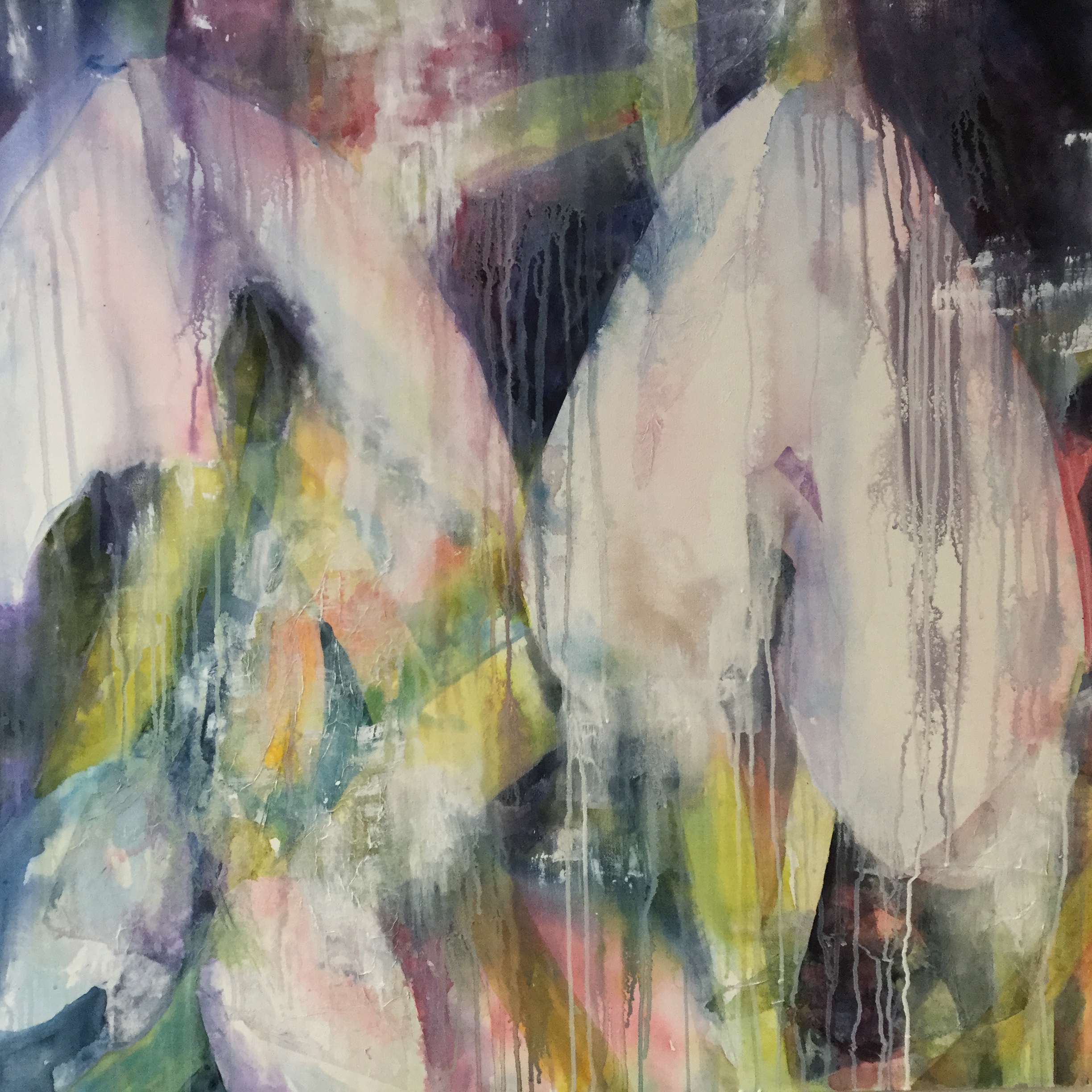
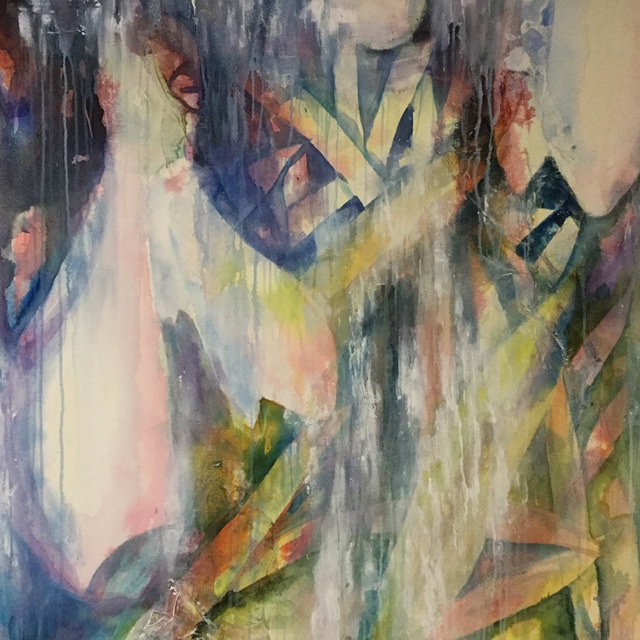 Both of these paintings are still works in progress, but are almost there. They are at the stage where I need to work for a few minutes to make a mark, and then wait til they dry, before making a further mark, a process that could take days or weeks.
Both of these paintings are still works in progress, but are almost there. They are at the stage where I need to work for a few minutes to make a mark, and then wait til they dry, before making a further mark, a process that could take days or weeks.




















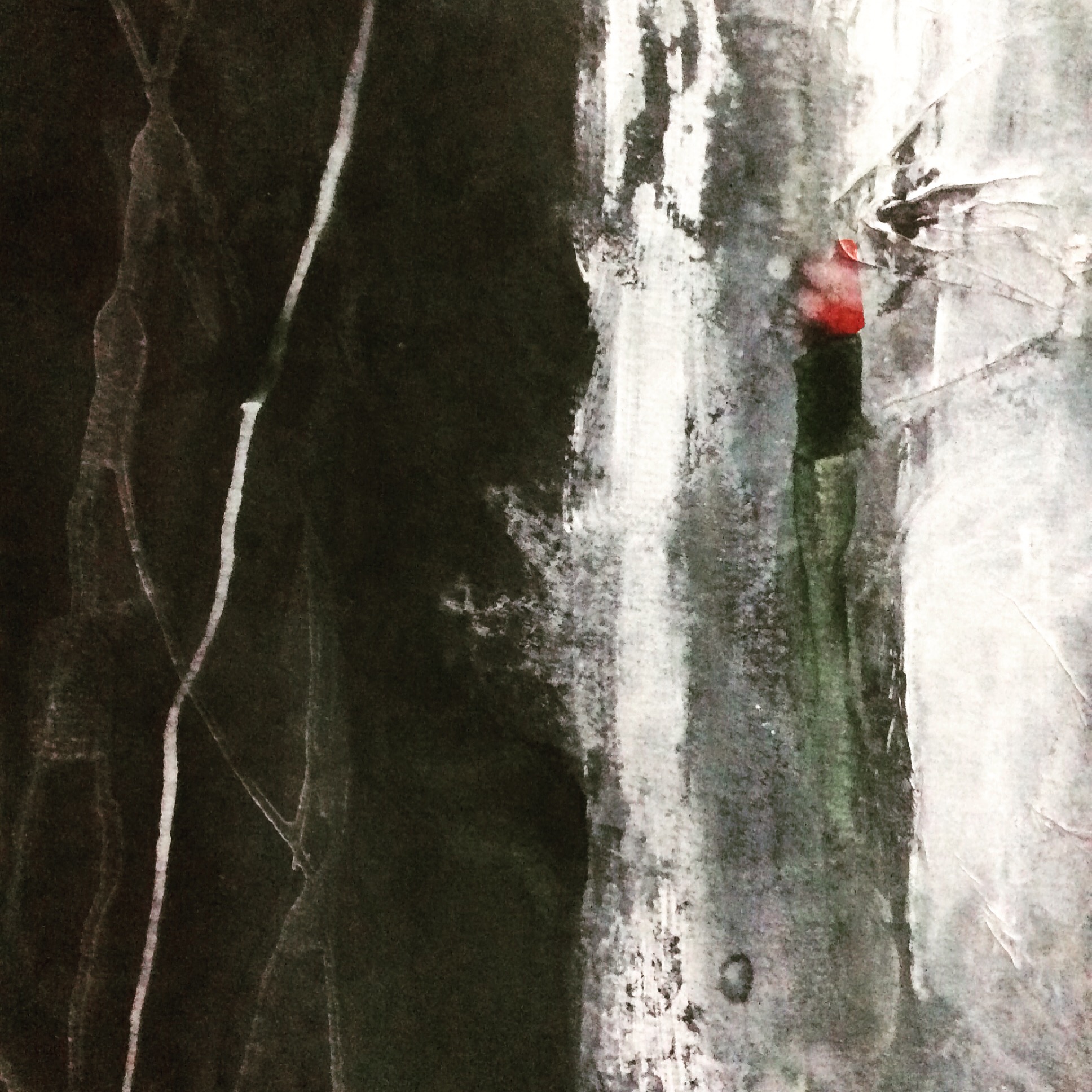














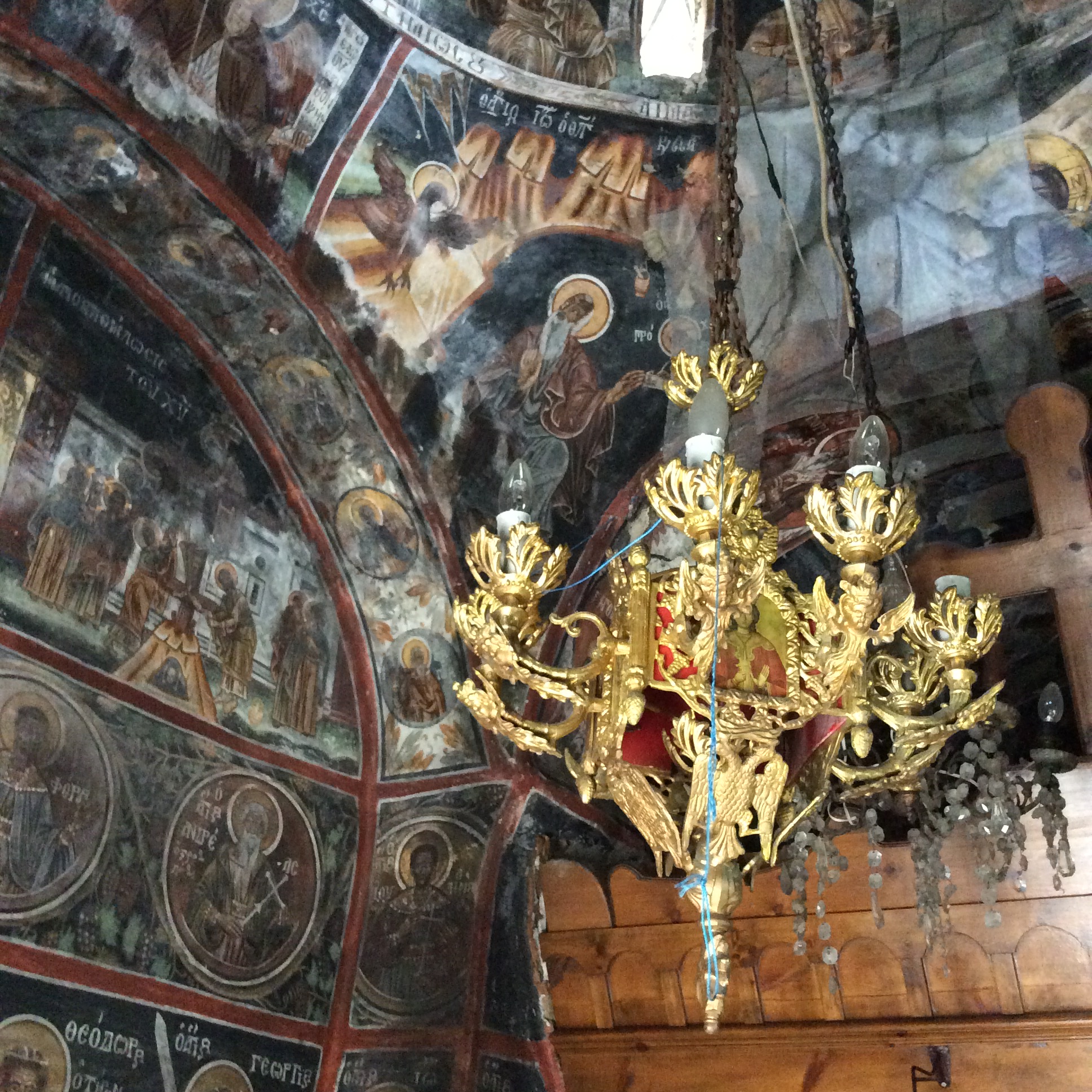









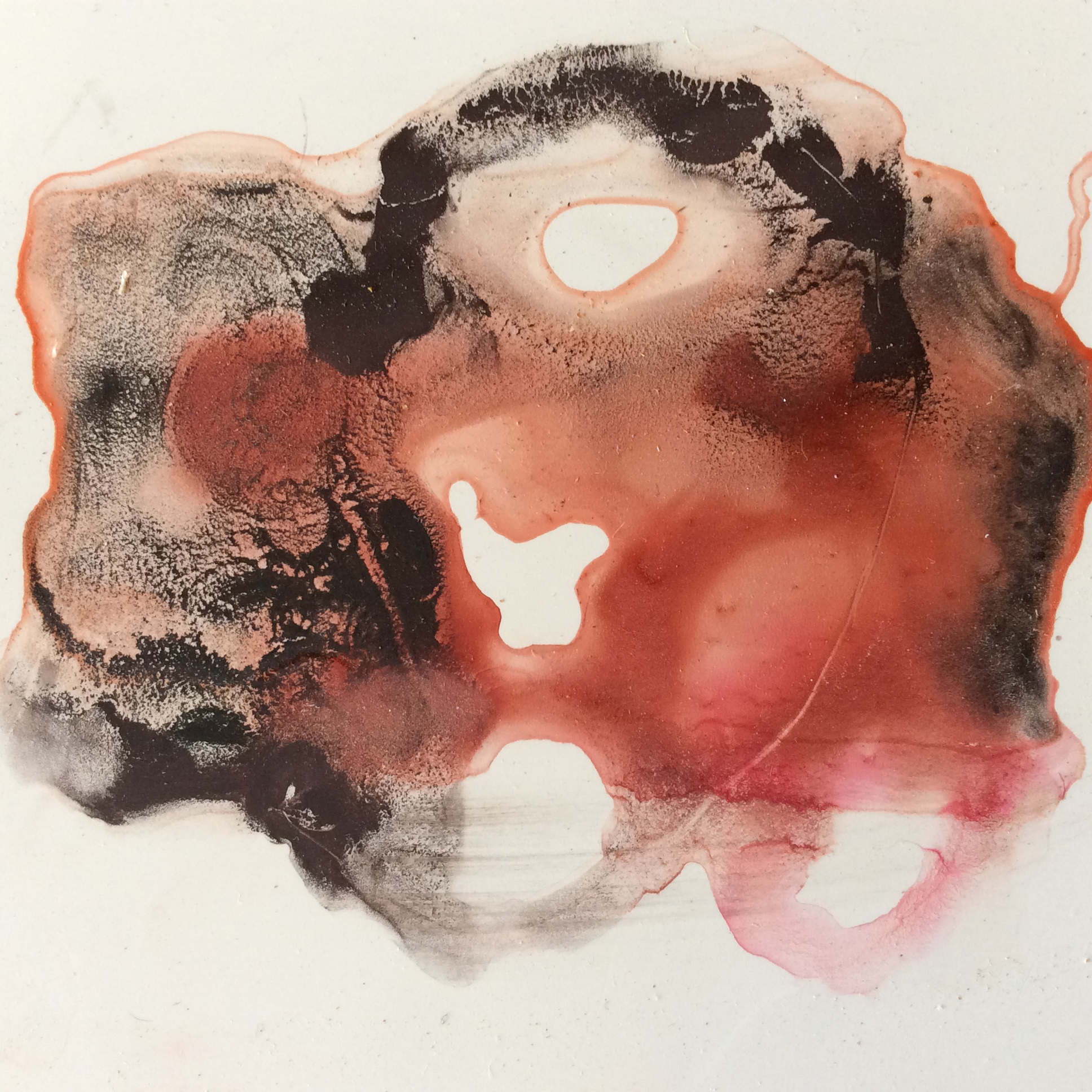
 The Rhodonite finds it hard to compete with the Bloodstone.
The Rhodonite finds it hard to compete with the Bloodstone.

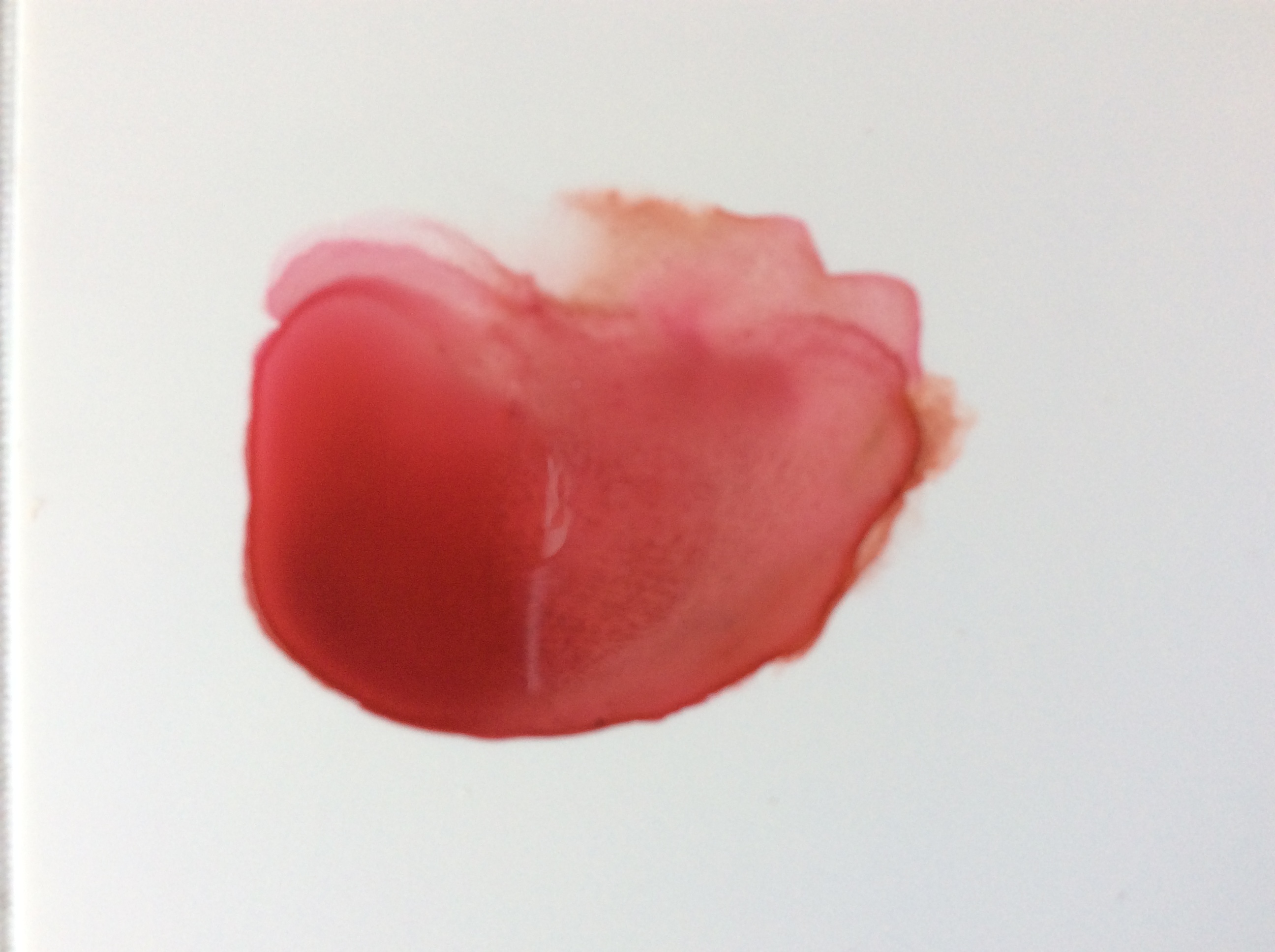


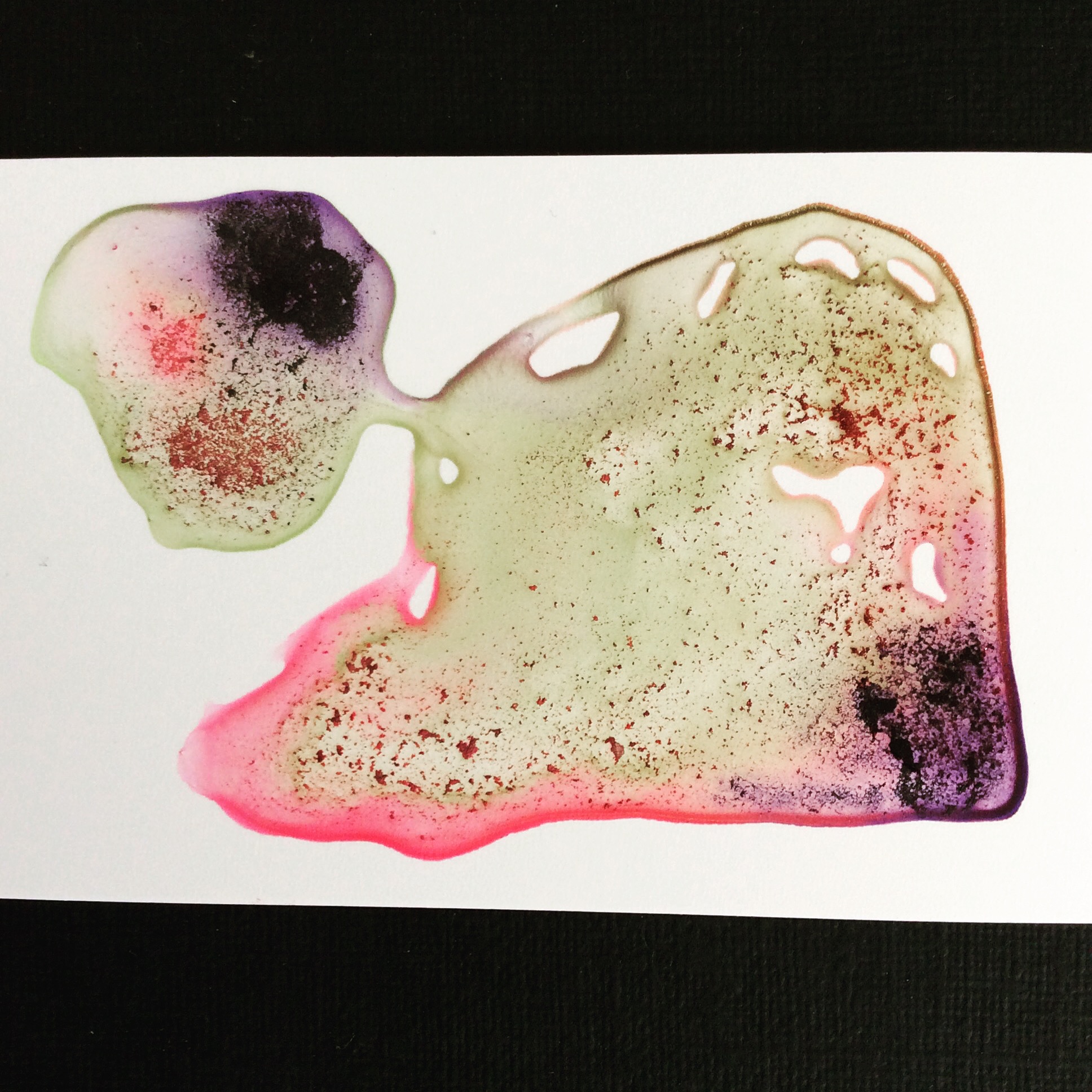


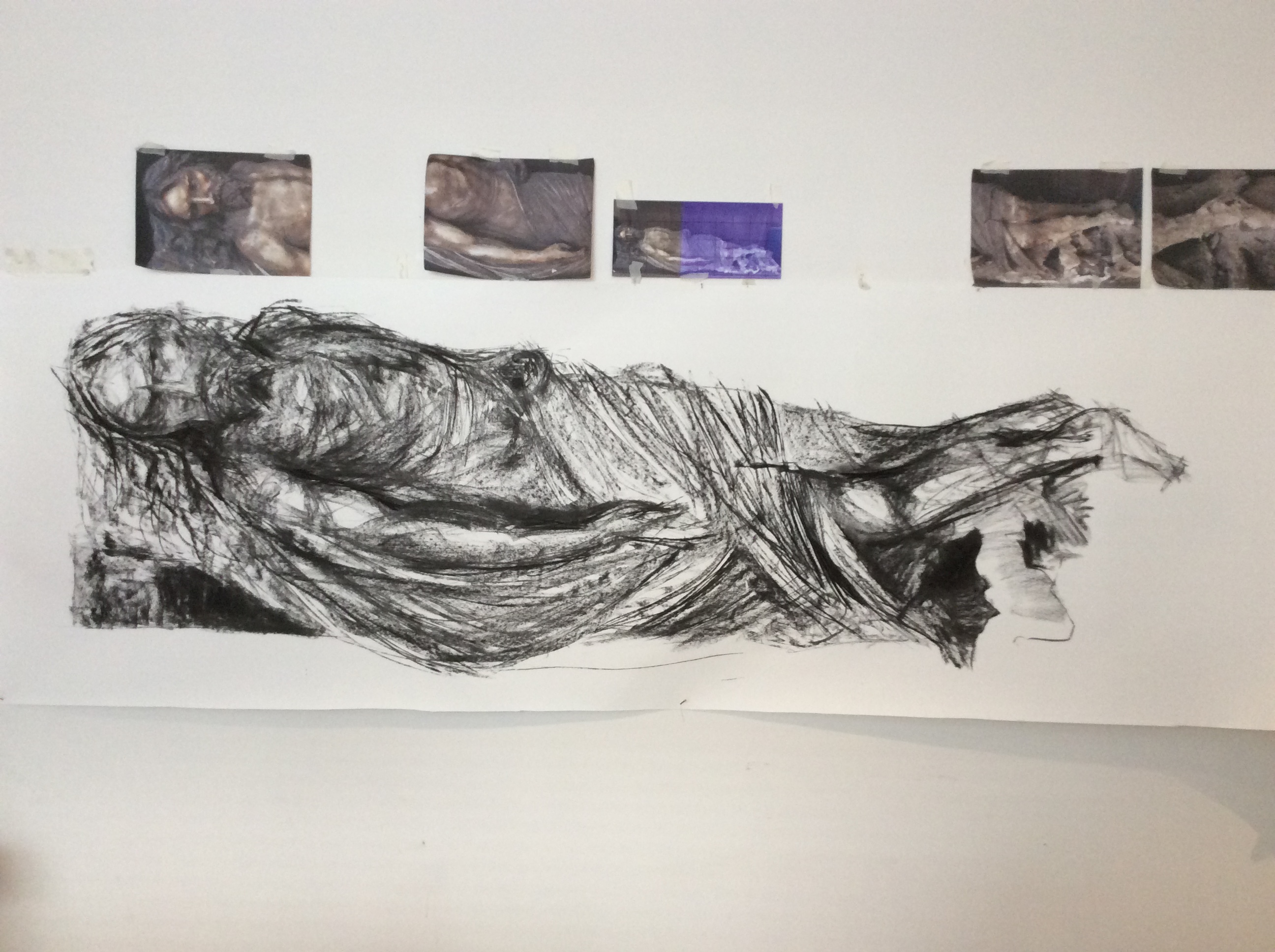
 The logistics have been interesting in my temporary studio, where I do not have a suitable wall. I will need to complete the left hand side of the work before moving the paper, as currently the right hand side is over the light switch. Oh for a more suitable studio.
The logistics have been interesting in my temporary studio, where I do not have a suitable wall. I will need to complete the left hand side of the work before moving the paper, as currently the right hand side is over the light switch. Oh for a more suitable studio.



 I need to rethink. Maybe change the paper, my approach, the intensity of the colours. I feel that these beautiful paints need to be allowed to speak more for themselves. That said, I will continue to develop the unsatisfactory images just in case.
I need to rethink. Maybe change the paper, my approach, the intensity of the colours. I feel that these beautiful paints need to be allowed to speak more for themselves. That said, I will continue to develop the unsatisfactory images just in case. No special reason why this altar other than the words are easily accessible. I want to combine the traced words with an ink painted image on top. I choose the angels. Why not! This is when I realise the problems of working on site.
No special reason why this altar other than the words are easily accessible. I want to combine the traced words with an ink painted image on top. I choose the angels. Why not! This is when I realise the problems of working on site. Interestingly the words traced by hand with charcoal dust (at the bottom), look more manufactured than those without direct human contact.
Interestingly the words traced by hand with charcoal dust (at the bottom), look more manufactured than those without direct human contact.
 I return to the pew to give my knees a rest. Looking at the main altar I am reminded that once you see something it is difficult to unsee. I see two ghosts with their arms raised, to the left, above the figures, and two girls to the right with long bunches, similar to the characters in a manga comic. I sit there wondering why the Catholics would make such a homage…. clearly time to stop.
I return to the pew to give my knees a rest. Looking at the main altar I am reminded that once you see something it is difficult to unsee. I see two ghosts with their arms raised, to the left, above the figures, and two girls to the right with long bunches, similar to the characters in a manga comic. I sit there wondering why the Catholics would make such a homage…. clearly time to stop.

 I work with tissue for its textural and unpredictable qualities, so this could be a natural extension to that practice.
I work with tissue for its textural and unpredictable qualities, so this could be a natural extension to that practice.







